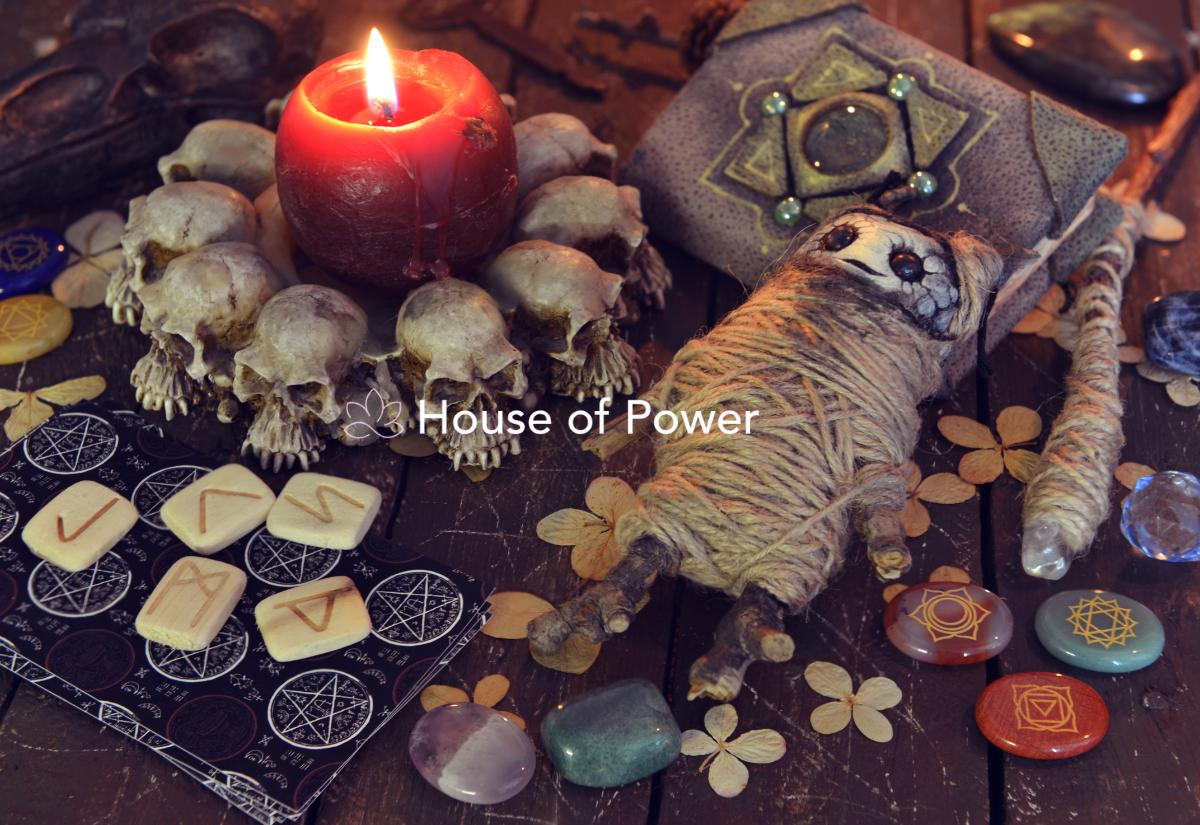Introduction
Obeah is one of the most enduring folk traditions in Jamaica, shaped by the island’s African heritage, colonial history, and community storytelling. Although often shrouded in mystery, Obeah is also an expression of resilience and cultural identity.
A key part of this tradition is the use of symbols and tools — items that carry layers of meaning for those who practice or study it.
Note: The information shared here is for cultural and educational purposes only. Obeah practices vary by community, and many elements remain private or sacred.
Historical Background
The tools and symbols associated with Obeah come from a blend of African spiritual systems, European folk customs, and Caribbean indigenous knowledge. Enslaved Africans adapted these traditions to new environments, using familiar materials like herbs, shells, and carved wood to sustain their beliefs and protect community life.
Colonial governments later targeted these objects, linking them to rebellion or outlawed “witchcraft.” Yet despite suppression, their symbolic importance endured, passed down through stories, songs, and family memory.
Common Symbols and Tools
Below are some items historically linked with Obeah, along with their cultural associations. These descriptions reflect folklore and anthropology rather than promises of supernatural outcomes.
1. Herbs and Roots
- Plants such as guinea hen weed, basil, rosemary, and pimento leaves have long been used in Jamaican folk medicine and rituals.
- They represent purification, healing, or mindfulness, and are often used in baths, teas, or incense.
2. Charms and Amulets
- Small bags or pouches, sometimes called guard rings or protection bags, may include coins, shells, herbs, or handwritten prayers.
- These serve as reminders of safety, inner strength, or ancestral connection.
3. Candles and Lamps
- Lighting candles — white, red, blue, or gold — is common in many Caribbean spiritual practices.
- Candles symbolize clarity, focus, and the human desire to “bring light” to challenges.
4. Seals and Scripted Symbols
- Certain drawings, geometric designs, or written words are said to reflect wisdom from African and biblical traditions.
- They often decorate altars or personal journals, offering space for meditation or prayer.
5. Water Bowls and Libations
- Water holds special meaning as a symbol of life, calm, and cleansing.
- In some households, a bowl of water may be placed in a quiet spot to honor ancestors or invite reflection.
6. Drums, Bells, and Musical Instruments
- Music is vital in Obeah and other Afro-Caribbean traditions.
- Drums, rattles, and bells create rhythm during ceremonies, helping participants focus or celebrate shared heritage.
7. Personal Keepsakes
- Items like photographs, heirlooms, or handkerchiefs can act as focal points in personal rituals.
- They link individuals to loved ones, memories, or intentions.
The Role of Tools in Community Life
These tools are not just objects; they’re cultural touchstones. They help communities:
- Preserve knowledge about herbs, healing, and symbolism.
- Pass down stories about resistance and survival.
- Support a sense of belonging and identity.
For many Jamaicans, studying or keeping these items is about remembering roots and valuing ancestral creativity.
Respect and Responsibility
Because Obeah carries layers of meaning — from sacred practice to misunderstood folklore — it’s important to approach its tools with respect:
- Avoid sensationalism or treating them as curiosities.
- Recognize that some symbols are private to practitioners.
- Remember that Obeah’s significance lies in its cultural and historical context.
Conclusion
The symbols and tools of Obeah remind us that Jamaica’s past is alive in its present. They speak to endurance, adaptation, and the power of culture to preserve hope, wisdom, and identity.
Whether you view them as art, history, or spirituality, these items are part of the island’s vibrant story — a testament to creativity and resilience across generations.

